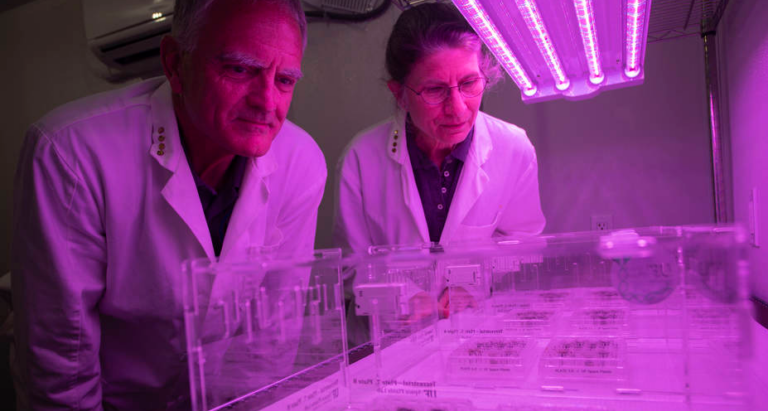In the early days of the space age, the Apollo astronauts took part in a visionary plan: Bring samples of the lunar surface material, known as regolith, back to Earth where they could be studied with state-of-the-art equipment and saved for future research not yet imagined. Fifty years later, at the dawn of the Artemis era and the next astronaut return to the Moon, three of those samples have been used to successfully grow plants. For the first time ever, researchers have grown the hardy and well-studied Arabidopsis thaliana in the nutrient-poor lunar regolith.
“This research is critical to NASA’s long-term human exploration goals as we’ll need to use resources found on the Moon and Mars to develop food sources for future astronauts living and operating in deep space,” said NASA Administrator Bill Nelson. “This fundamental plant growth research is also a key example of how NASA is working to unlock agricultural innovations that could help us understand how plants might overcome stressful conditions in food-scarce areas here on Earth.”

James Hetfield makes congratulatory call to woman who gave birth at Metallica show (video)
Scientists at the University of Florida have made a breakthrough discovery — decades in the making — that could both enable space exploration and benefit humanity. “Here we are, 50 years later, completing experiments that were started back in the Apollo labs,” said Robert Ferl, a professor in the Horticultural Sciences department at the University of Florida, Gainesville, and a communicating author on a paper published on May 12, 2022, in Communications Biology. “We first asked the question of whether plants can grow in regolith. And second, how might that one day help humans have an extended stay on the Moon.”
The answer to the first question is a resounding yes. Plants can grow in lunar regolith. They were not as robust as plants grown in Earth soil, or even as those in the control group grown in a lunar simulant made from volcanic ash, but they did indeed grow. And by studying how the plants responded in the lunar samples, the team hopes to go on to answer the second question as well, paving the way for future astronauts to someday grow more nutrient-rich plants on the Moon and thrive in deep space.
Read more: NASA
Ask me anything
Explore related questions





